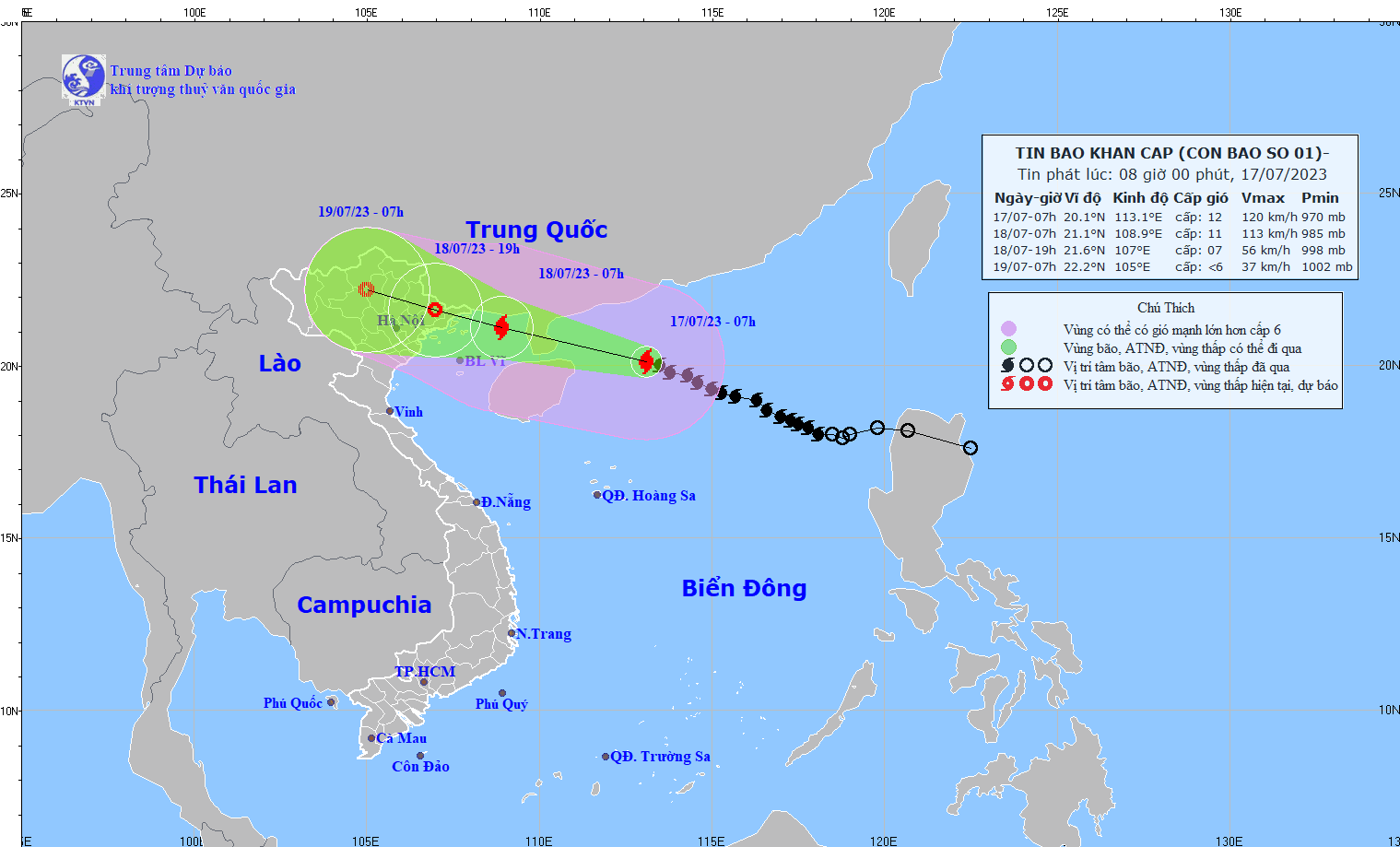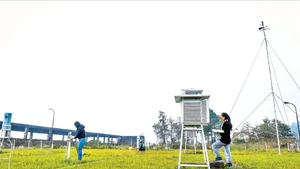Noting that this is the first storm to affect Vietnam in 2023, the Prime Minister cautioned disaster management agencies, leaders of the relevant ministries and local authorities against negligence and requested them to take bold actions to cope with the storm.
He called for measures to ensure safety for activities on the sea and islands, coastal economic facilities and a ban on fishing vessels, cargo ships and tourism ships from going to the sea.
The government leader also called for the evacuation of residents in disaster-prone areas, protection of reservoirs, dykes and other vulnerable spots, and preparation of essential supplies to deal with any situation.
As of 7 am on July 17, Talim was located at about 290 kilometres to the east-southeast of China’s Leizhou Peninsula, packing winds of up to 133 kilometres per hour, according to the national weather service.
In the next 24 hours, the storm is forecast to move west-northwest at the speed of 15-20 kilometres per hour and hit the Vietnamese mainland later on July 18, before weakening to a tropical depression.
Storm surges are expected to increase sea water levels by 0.5-0.7 metres, with the low-lying coastal and estuary areas facing a high risk of flooding and erosion due to the combined effect of rising tides and strong waves.
Talim will also bring heavy downpours of 200-350 millimetres to the northern region, with some forecast to receive rainfall of over 500 millimetres.
Heavy rains after a 10-day heatwave will increase the risk of flash floods and landslides, especially in the provinces of Quang Ninh, Lang Son, Cao Bang, Ha Giang, Lao Cai and Yen Bai.
With strong winds and rains, Talim is also expected to affect the operation of several airports in northern Vietnam, including Van Don, Cat Bi, Noi Bai and Tho Xuan.
The Civil Aviation Authority of Vietnam asked airport operators and airlines to work closely together to ensure absolute flight safety and adjust flight schedules following the development of the storm.
















